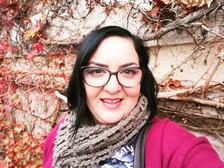
Jasna Veljanović (1980, Germany) is a composer and music theorist who lives in Kragujevac, Serbia. She is employed as an associate professor at the Faculty of Philology and Arts in Kragujevac. Her theoretical work focuses on the formal aspects of piano music from the late 17th and early 18th centuries. As a composer, she pays special attention to voice and chamber compositions for various ensembles. The Danish duo InDuo (consisting of Sofie Elkjer Jensen and Isabella Julia Stockholm Hubner) has commissioned her works for flute and soprano. In cooperation with colleagues from the Faculty of Philology and Arts (Vladimir Blagojević and Saša Mirković), she is also dedicated to expanding repertoires for accordion and viola, both as solo instruments and in chamber ensembles. Thanks to her love for flute and her fruitful collaboration with Stana Krstajić, she also expanded contemporary Serbian repertoire for flute, both solo and in ensembles. She participated in the 17th, 18th, 19th, 22nd and 24th editions of the International Review of Composers in Belgrade. Her works have been performed in Serbia (Kragujevac, Belgrade, Niš, Smederevo) and abroad (Croatia, Ukraine, Slovenia, Georgia, Czech Republic, Germany, Denmark, Poland).
About the work
The composition Three Songs for Mezzo-Soprano and Viola based on verses by Stevan Raičković was written for the 30th International Tribune of Composers. Since its basis is a poetic text, it serves as the main inspiration for the creation of this work. The poems belong to the poetic cycle Stihovi (Verses) and were created at different times, but they are connected by certain symbols that permeate Raičković’s entire work, as leit-motifs, such as the relationship between the poet and the reader, life itself and its transience, eternity, freedom. Precisely this kind of metaphysical prose, deprived of typical classical frames, but again framed by a poetic norm, served as a strong inspiration for the musical background that tries to match it and supplement it, or revive it through another art – music. The synergy of two melodic instruments – voice and viola – allows endless freedoms, while avoiding the typical relationship of melody and accompaniment characteristic of a solo song.


